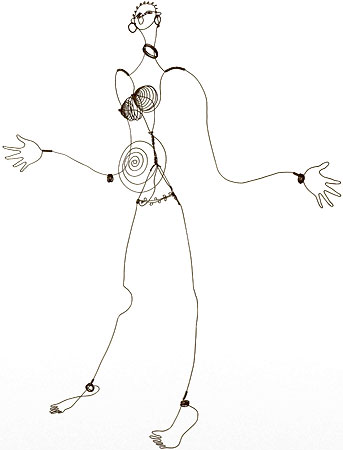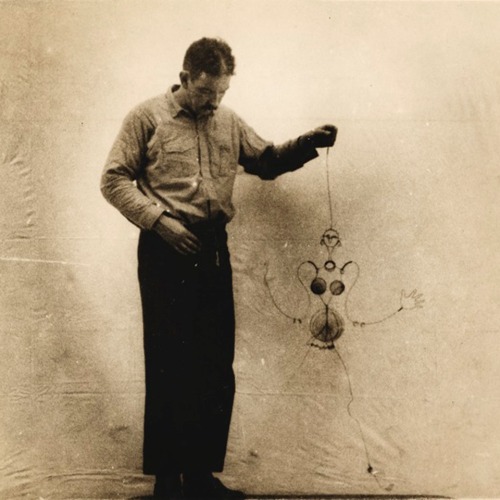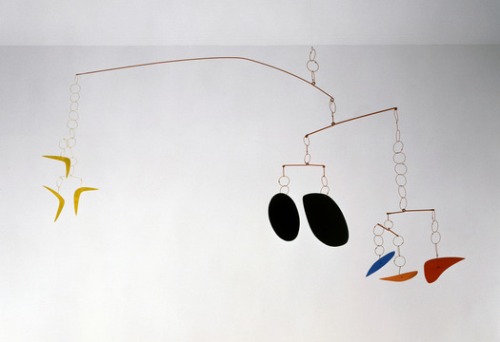Josephine Baker was already the toast of Paris when American artist Alexander Calder arrived there in early 1926. Her show, “La Revue Negre,” which opened at the Theatre des Champs-Elysees on Oct. 2, 1925, was an instant hit. The finale of the evening was a “Charleston Cabaret,” whose featured number became known as “La Danse de Sauvage”:
A big, good-looking performer named Joe Alex, wearing next to nothing, paced onto the stage with a woman slung over his back: the 5-foot-8, coffee-colored Josephine, built like a Modigliani Venus. The handful of feathers she wore did not impede anyone’s appreciation of her nudity. She slid down her partner’s legs and proceeded to offer up to him every soft spot of her body, in musical time. In fact, she seemed to create musical time, her movement setting the pulse, with the orchestra going along for the ride. There wasn’t a dance step in sight, but “La Danse de Sauvage” created one of the great dance effects of the 20th century.
On Oct. 3, Josephine Baker woke up to find herself the American in Paris, her rear end the subject of odes, her thighs the subject of universal speculation. 1
Josephine was 19.
Calder was entranced by Josephine.
Back in America, “Sandy” Calder had been a newspaper illustrator and a painter, but, in moving to Paris, he had abandoned all that and was newly dedicating himself to his love of wire sculpture. “I think best in wire,” he said. With his bare hands, a spool of wire, and a pair of pliers, Calder proceeded to twist, pinch, coil, and bend lengths of wire to capture Baker’s sensuous body and springy movements. Between 1926 and 1930, he created five of these roughly three-to-four feet tall “drawings in space” of the exotic Josephine Baker:
The swaying line of her arms and torso, the spiral breasts and the legs crossed in a dance movement came to life when the artist suspended the figures from a string. 2

American writer Ernest Hemingway said that French-American performer Josephine Baker was “the most sensational woman anyone ever saw.” photo: Josephine Baker, France, ca. 1920s, Atelier Sautier
For more on Josephine Baker, click here.
For more on Alexander Calder, click here.
























